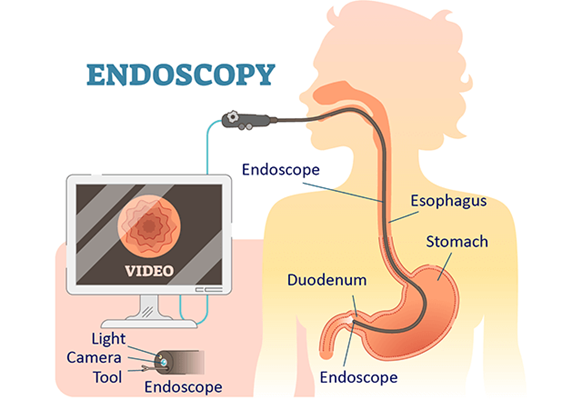- srushtigastro@gmail.com
- +91- 8073380392
Upper GI Endoscopy

This descriptive piece delves into the realm of upper GI endoscopy, capturing the intricacies and significance of this diagnostic procedure. It begins with the anticipation and preparation, as patients await the exploration of their internal landscape. The description then transitions to the moment of truth, as the endoscope, a slender and flexible tube equipped with a miniature camera and light source, is gently guided through the mouth and into the esophagus. With each advancement, the endoscope reveals the inner workings of the upper digestive tract in real-time, transmitting images to a monitor for careful examination by the gastroenterologist.
The narrative unfolds as the endoscope traverses the esophagus, revealing any abnormalities such as inflammation, ulcers, or strictures. It then navigates into the stomach, where the mucosal lining and structures are scrutinized for signs of disease or dysfunction. Finally, the journey culminates in the duodenum, the first part of the small intestine, where further assessment may uncover additional insights into the patient’s gastrointestinal health.
Throughout the description, emphasis is placed on the meticulous attention to detail and the expertise of the medical team orchestrating the procedure. From adjusting the endoscope’s position to capturing high-definition images, every action is executed with precision and care to ensure a thorough evaluation and accurate diagnosis.
We give the best Upper GI Endoscopy in HSR Layout. Contact us today.
Benefits:
In summary, upper GI endoscopy serves as a vital tool in the diagnostic arsenal of gastroenterologists, offering a window into the upper digestive tract and paving the way for timely intervention, personalized treatment, and improved patient care.
Empowering assistance, right when it matters. We’re here to lend a hand whenever you need it.

Call : +91- 8073380392
srushtigastro@gmail.com
Srushti Gastro & liver Clinic 186, 165, 9th Main Rd, Sector 6, HSR Layout, Bengaluru, Karnataka 560102